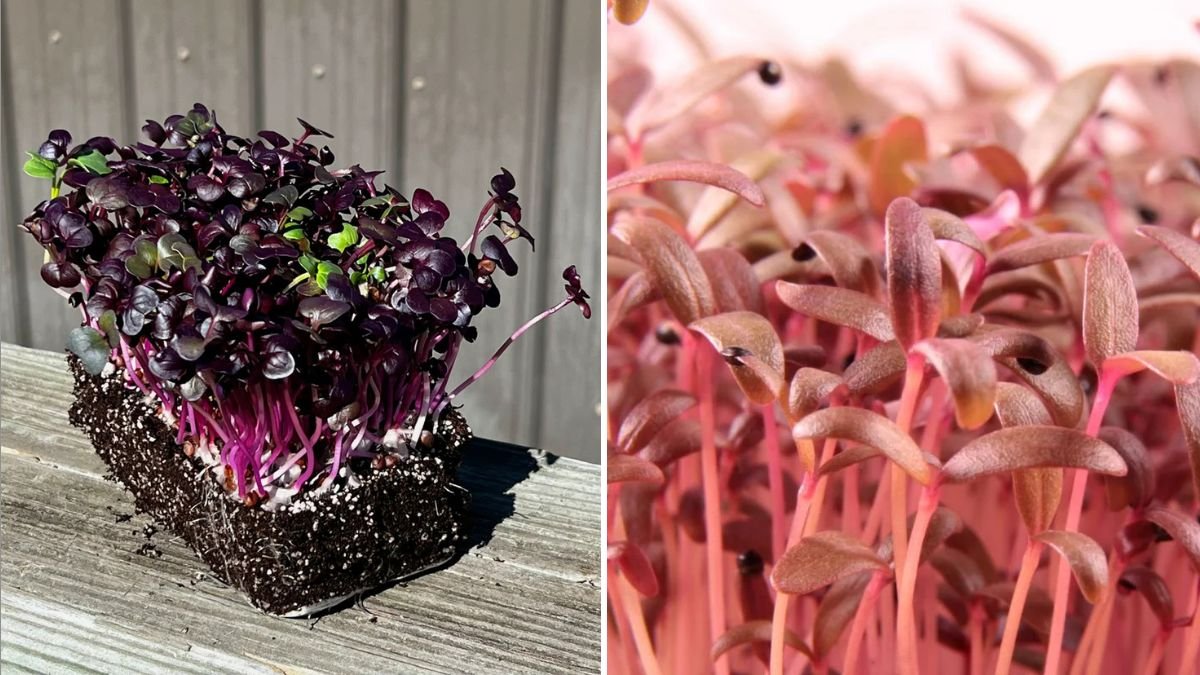If you’re looking to add a pop of color, nutrition, and flavor to your meals, amaranth microgreens might just become your next favorite superfood. With their striking red, pink, or purple stems and mild, earthy taste, these tiny greens are taking over kitchens and urban gardens across America.
Packed with vitamins, minerals, and antioxidants, amaranth microgreens are not only beautiful but also incredibly nutritious and easy to grow right at home. Whether you live in a city apartment or a suburban house, you can cultivate these vibrant greens in just 10 days and enjoy a fresh, nutrient-rich harvest year-round.
In this guide, you’ll discover everything about growing, harvesting, and using amaranth microgreens, along with the health benefits that make them one of the most exciting microgreens in the U.S. wellness and gardening community.
What Are Amaranth Microgreens?
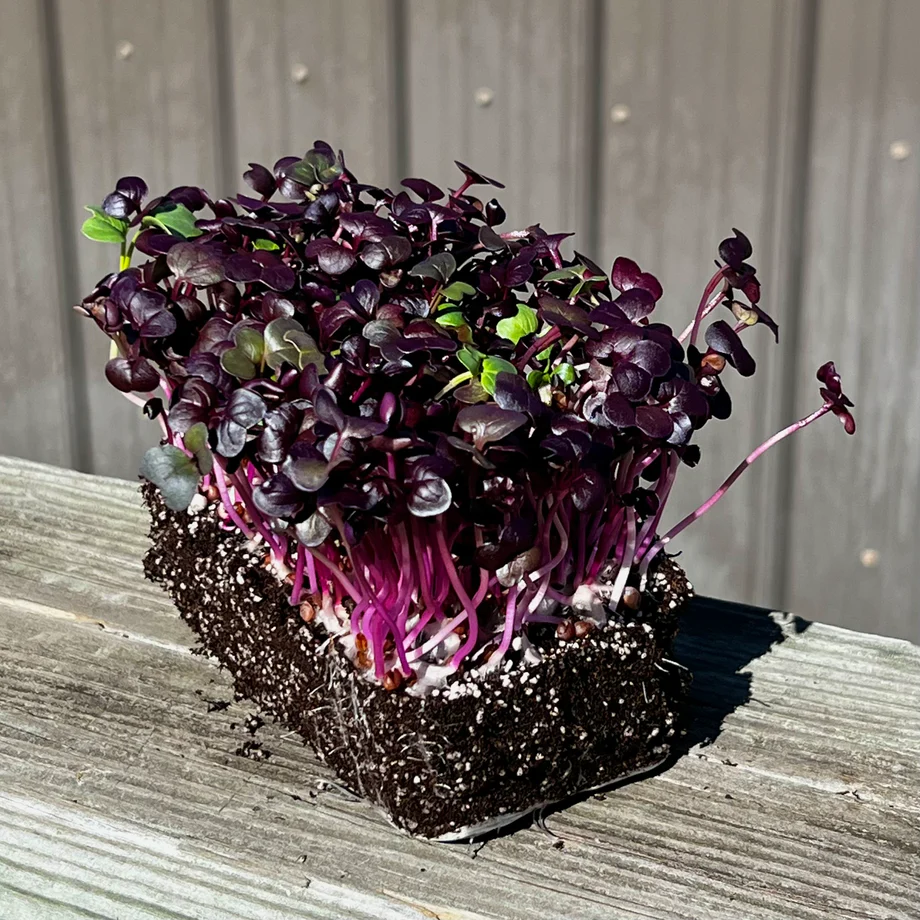
Amaranth microgreens are the young seedlings of the amaranth plant, harvested when they are about one to two inches tall. While amaranth is often known for its ancient grains, its sprouts are equally valuable for their flavor and nutrients.
These microgreens mature quickly — usually within 8 to 12 days — making them a perfect crop for home growers. Their vivid red and magenta colors make them a favorite among chefs who love adding natural beauty to salads, soups, and main dishes.
Don’t let their small size fool you — these greens are packed with powerful nutrition that supports energy, immunity, and wellness.
Nutritional Benefits of Amaranth Microgreens
Amaranth microgreens are one of the most nutrient-rich microgreens you can grow. They provide an excellent mix of vitamins, minerals, and antioxidants essential for overall health.
1. High in Vitamins A, C, and K
These vitamins strengthen your immune system, promote bone health, and help maintain glowing skin.
2. Complete Plant-Based Protein
Amaranth microgreens contain all nine essential amino acids, making them a complete source of protein — a rare trait for a plant-based food.
3. Rich in Iron and Calcium
They’re a great source of iron, which supports healthy blood, and calcium, which strengthens bones and teeth.
4. Powerful Antioxidants
Their vibrant red and purple colors come from betalains — antioxidants that help fight inflammation and oxidative stress.
5. Low-Calorie and High-Energy
These greens are light, filling, and nutrient-dense, making them a perfect addition to weight management or fitness-focused diets.
Why Amaranth Microgreens Are Trending in America
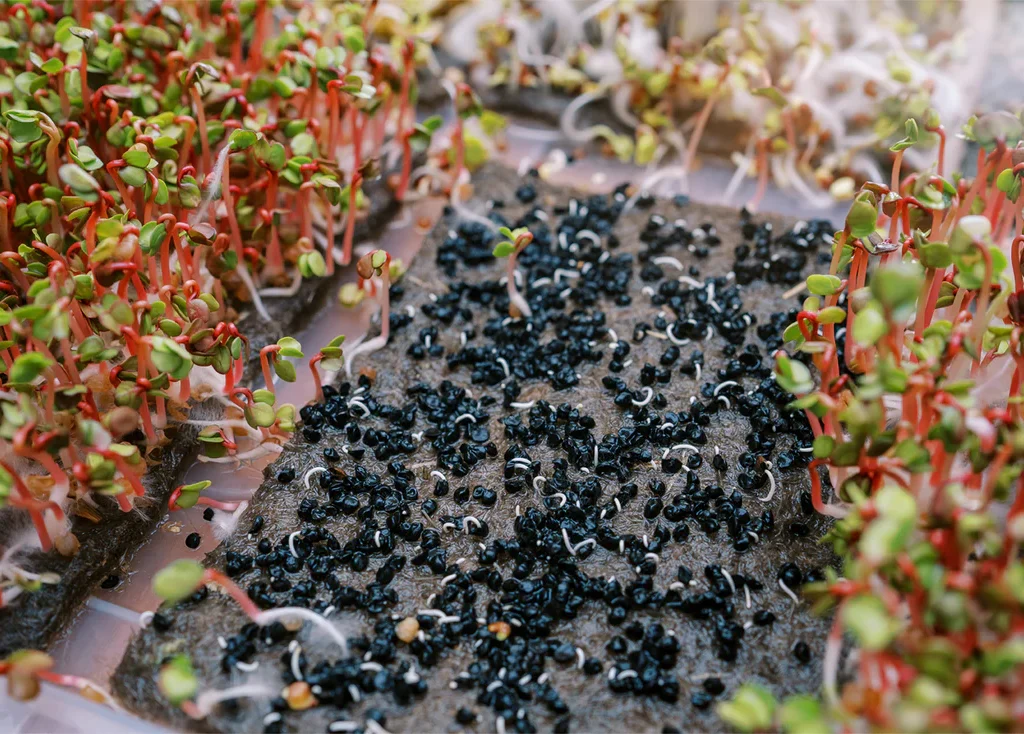
Microgreens have become a major trend in the United States as more people look for ways to eat healthy, fresh, and sustainable foods. Amaranth microgreens, in particular, stand out because they combine bright visual appeal with powerful nutrition.
Across America, from New York chefs to California gardeners, people love these microgreens for several reasons:
- Visually stunning: Their colors add a gourmet touch to meals.
- Fast-growing: Ready in just 8 to 12 days.
- Space-saving: Perfect for apartments and indoor gardens.
- Eco-friendly: Require minimal water and no chemicals.
- Fresh all year: Can be grown indoors in any season.
Amaranth microgreens perfectly fit the modern American lifestyle — healthy, convenient, and beautiful.
How to Grow Amaranth Microgreens at Home
Growing amaranth microgreens at home is easy and rewarding. Even if you’ve never grown plants before, you can harvest your own greens in less than two weeks.
You’ll Need:
- Amaranth seeds (for microgreens)
- A shallow growing tray with drainage holes
- Organic potting soil or coco coir
- Spray bottle or watering can
- Natural sunlight or a grow light
Step-by-Step Growing Instructions
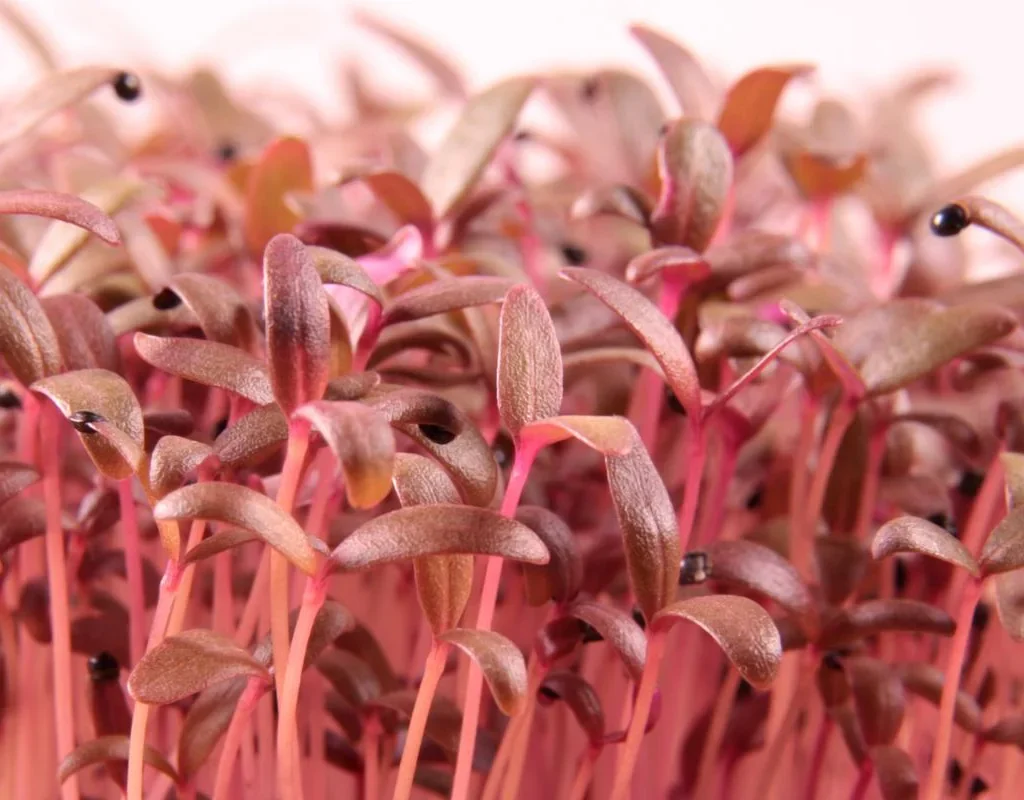
1. Prepare the Tray
Fill the tray with about one to two inches of moist soil or coco coir. Level the surface gently but do not pack it tightly.
2. Sow the Seeds
Sprinkle amaranth seeds evenly across the soil surface. Since they’re small, a light dusting is enough. Press them gently to ensure contact with the soil but don’t bury them.
3. Mist and Cover
Mist the seeds lightly with water and cover the tray with another tray or lid to create a warm, dark environment for germination.
4. Germination (Days 1–3)
Keep the tray in a warm location at about 70–75°F. Mist daily to keep the soil slightly moist but not soggy.
5. Provide Light (Days 4–10)
Once the seeds sprout, remove the cover and place the tray in bright, indirect sunlight or under a grow light. The greens will start developing their bright color and sturdy stems.
6. Water Carefully
Continue misting once or twice daily. Make sure there’s no standing water, as that can lead to mold.
7. Harvest (Days 8–12)
When your amaranth microgreens reach 2–3 inches tall and have developed a rich color, use clean scissors to cut them just above the soil.
8. Rinse and Store
Rinse the greens gently with cold water, pat dry, and store them in a sealed container in the refrigerator for up to five days.
What Do Amaranth Microgreens Taste Like?
Amaranth microgreens have a mild, earthy, and slightly sweet flavor. Their taste is more delicate than spicy varieties like mustard or arugula microgreens, making them a perfect complement to both savory and sweet dishes.
Their tender texture and striking color make them ideal for garnishing salads, soups, sandwiches, and even desserts.
How to Use Amaranth Microgreens in Your Meals

These microgreens aren’t just nutritious — they’re incredibly versatile. Here are some creative ways to add them to your daily meals:
1. Fresh Salads
Mix amaranth microgreens with spinach, cherry tomatoes, and cucumber. Add a light lemon or olive oil dressing for a refreshing, nutrient-rich salad.
2. Sandwiches and Wraps
Use them instead of lettuce for a burst of color and nutrition. They pair beautifully with avocado, hummus, and grilled vegetables.
3. Pasta and Grain Bowls
Sprinkle the greens over warm pasta, quinoa, or rice bowls just before serving for a pop of color and mild flavor.
4. Smoothies and Juices
Blend a handful of amaranth microgreens into your morning smoothie for a natural energy boost and added nutrients.
5. Garnishes and Platters
Use them as an elegant garnish for soups, pizza, or desserts. Their vivid hue makes any dish look gourmet.
Tips for Successful Growth
To ensure a healthy and colorful harvest, keep these key tips in mind:
- Always use clean trays and tools to prevent mold.
- Avoid overwatering; mist lightly once or twice daily.
- Ensure good air circulation around your tray.
- Rotate the tray daily for even light exposure.
- Harvest on time — younger greens are more tender and flavorful.
Common Issues and Solutions
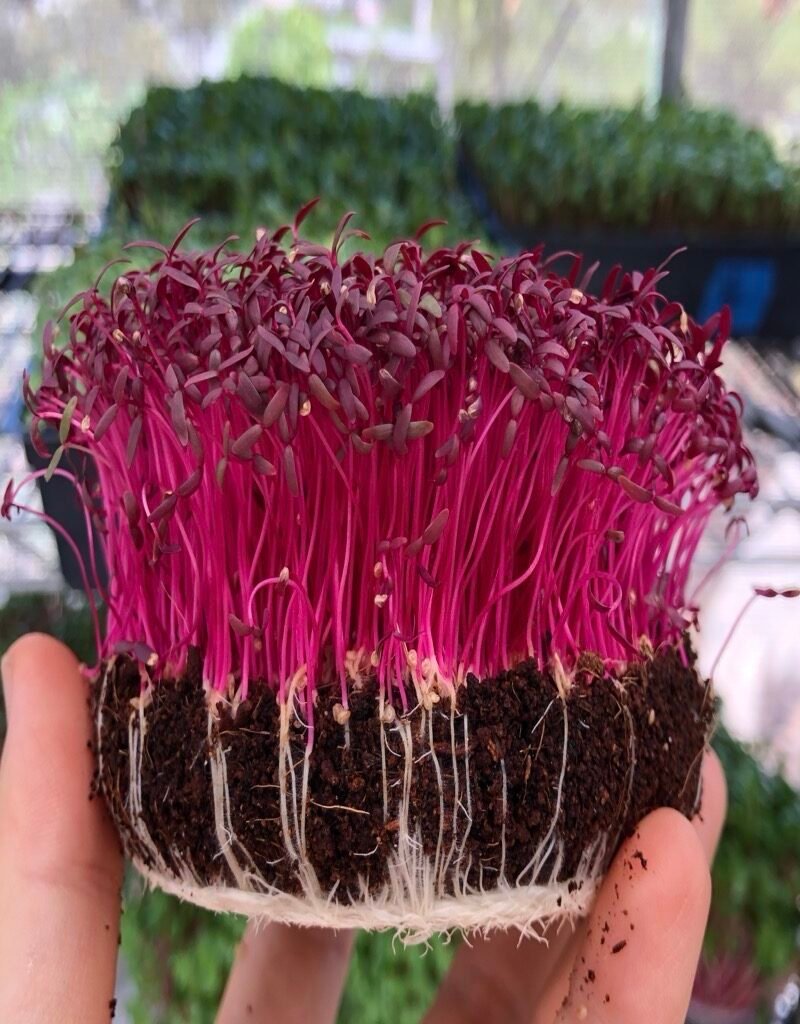
| Problem | Cause | Solution |
|---|---|---|
| Mold growth | Too much moisture | Reduce watering and improve airflow |
| Pale color | Lack of light | Move to a sunnier spot or use a grow light |
| Weak stems | Poor light or too much moisture | Increase light exposure and reduce misting |
| Uneven growth | Dense seeding | Spread seeds more evenly next time |
Sustainability and Cost Benefits
Growing amaranth microgreens at home supports both your health and the planet.
- Eco-friendly: They require minimal water and zero chemicals.
- Budget-conscious: A few seeds produce multiple trays of greens.
- Low waste: Grow exactly what you need, when you need it.
- Reusable supplies: Most trays and tools can be used again and again.
For Americans embracing sustainable living, microgreens are an easy way to eat locally, cut grocery costs, and reduce food waste.
Health and Culinary Value
Amaranth microgreens blend health benefits with gourmet appeal. Their brilliant colors indicate strong antioxidant content, while their mild flavor enhances countless recipes. From upscale restaurants to home kitchens, these greens are redefining what fresh and nutritious eating looks like.
They fit perfectly into the growing trend of homegrown, organic food — ideal for anyone who values clean eating and fresh ingredients.
Conclusion: Small Greens, Big Benefits
Amaranth microgreens are proof that small things can make a big difference. They’re colorful, nutritious, and surprisingly easy to grow. Within days, you can have a harvest that boosts your meals with natural vitamins, minerals, and protein.
Whether you’re a chef looking to impress, a health-conscious eater, or a home gardener seeking a quick win, amaranth microgreens offer the perfect combination of beauty and nourishment.
Start your microgreen journey today — grow your own vibrant, flavorful, and nutrient-packed amaranth microgreens right from your windowsill, and enjoy a fresh touch of wellness every day.
